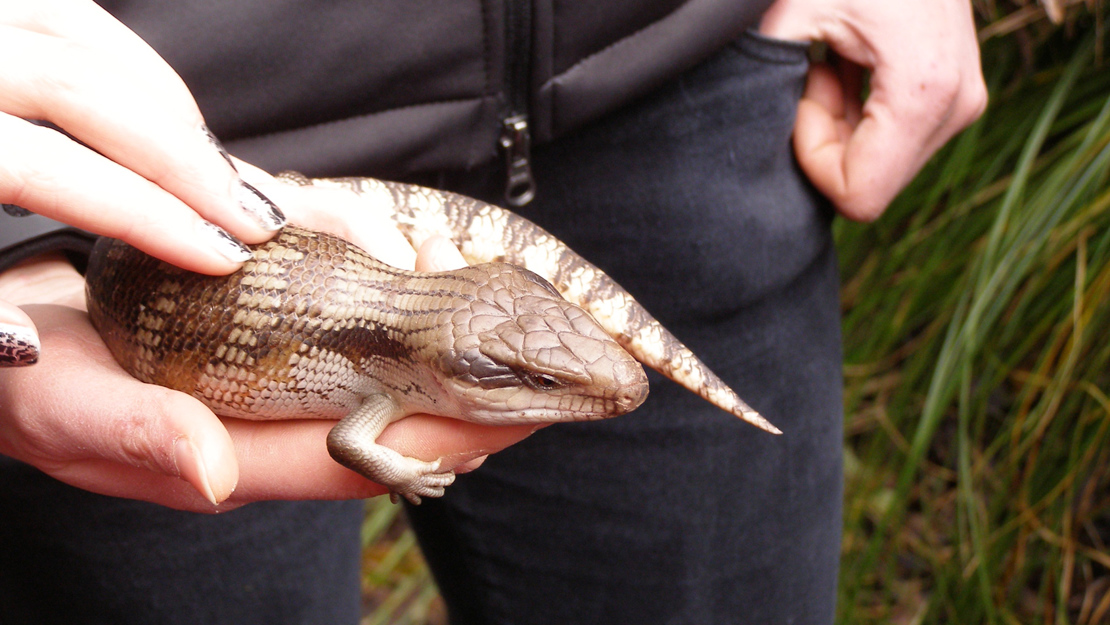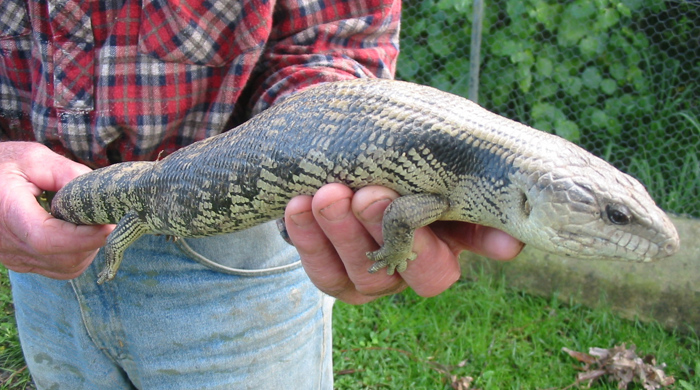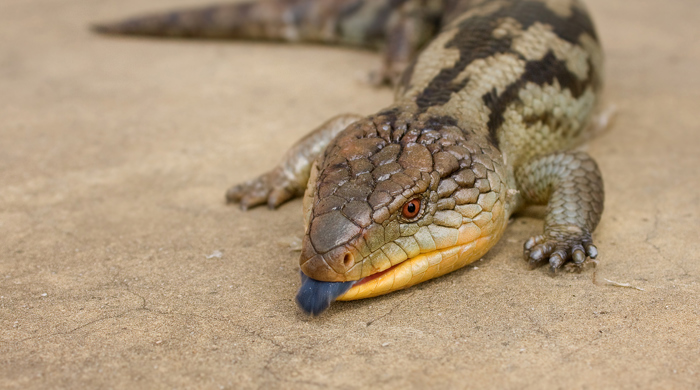Tiliqua scincoides, T. nigrolutea
Blue-tongued skink
Also known as:
Common blue-tongued skink, blotched blue-tongued skink
Family: Scincidae
Origin: Australia, Indonesia

Regional Pest Management Plan (RPMP) status
- Aotea — Exclusion
- Whole region — Sustained control
- Hauraki Gulf Controlled Area Notice pest
General description
Lizard with distinctive blue tongue, 40-70 cm long. Common blue-tongued skinks have dark bands around body, blotched blue-tongued skinks are mostly black with light brown, grey, yellow or orange blotches.
What you need to know
To help protect our environment, you must not breed, distribute, release or sell any blue-tongued skink within the Auckland region.
You are however still allowed to retain any existing individuals you already own. You can also take these animals to the vet, they can move with you if you move house, and you can take them to stay with someone else while you’re on holiday. You just need to keep them securely contained so they can’t escape into the wild.
If you pet-sit / provide temporary accommodation for other people’s animals, you’re also covered for receiving them, as long as you keep them securely contained while they are staying with you. However, if you receive animals on a more permanent basis, such as rescue centres, where ownership is changing hands, then you need to apply for an exemption for this activity. You can apply for free using this application form.
Habitats
Open habitats, forests, scrub, grasslands, coastal areas, urban gardens.
Impact on environment
Likely to prey on native invertebrates, smaller lizards, birds and their eggs. May compete with native species for food and resources. May spread disease and parasites to other reptiles.
Control
Management
If you have pet blue tongued skinks, make sure they’re securely contained to avoid accidental escapes. If you are no longer able to look after your pet blue-tongued skink, find someone who is prepared to give it a lifetime home, or contact a relevant pet shop or animal rescue organisation to get it rehomed.
Never release a blue-tongued skink into the wild – your pet may be unable to find the food and shelter it needs, and it also puts our native species at risk.
If you see a blue-tongued skink in the wild, please report it to Auckland Council at pestfree@aucklandcouncil.govt.nz.





